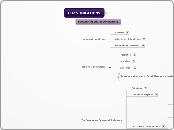CH7 SIMULATIONS
Structuring and Experimenting
The Features and Functions of Simlulations
Characteristics of Simulations
There are several aspects of simulations that should be considered, that is the features and functions of such innovative tool.
Sources for simulations
There are several simulation publishers that the market offers, although it is important to consider the educational value each one offers in order to go for them.
Although it it sometimes hard to find simulations, the market does offer several sources.
There a Educational Softaware Publishers, Commercial Software Publishers and Online Simulations. It all depends on the purpose of their usage and what you need to accomplish with them.
Online Simulations
Nowadays, internet has made it easier for students and teachers to find simulations. There are many simulations found online.
Two examples cited in Technology for Teaching are GenScope and Mars or Burst. They both have specific objectives for the students to accomplish and for their learning.
There are thousands of simulations online, teacher can even find sites that help create them and publish them.
Commercial Software Publishers
This type of simulation is not often used by educators because the focus deviates from education it self.
Nevertheless, it doesn't mean such simulation won't provide a learning experience. Susan Rudolph, a History teacher, decided to creat a simulation called Merier's Civilation II. She said she urged to find a different way to teach history.
Rudolph´s simulation has been very succesful, who are very excited about "game-playing".
That reminds me of that game Age of Empires, where the "player's" job is to help each civilization evolve.
Educational Software Publishers
An example mentioned on Technology For Teaching, is Hot Dog Stand. Such simulation provides economic principles for upper elementary students. It has an authentic problem, and promotes interactions from students.
There are several sumulations like this one in different subject areas such as Math, Science, Language Arts, etc.
Rules of interaction
A number one selling simulation was very successful because its popularity. It is also an example of how rules of interaction are crucial and need to be discovered in order for students to see each situation challenging.
Variables
Variables are key components in simulations because they are the elements on which the whole "game" or simulation moves around. They are the details in which if there are more the better the students engage into leraning.
A context setting
The setting is not only a manipulative part in simulations but also the map or grid that provides a reprensational map in the simulation.
An authentic problem
Students learn to listen carefully due to the way problems are represented in a simulation, with audio, video and other effects that make the situation very real-like.
A vision of knowledge
Knowledge is not simply a concept, but it becomes a group of theories that keep students focused in associating ideas and drawing connections between the virtual scenario and the real world.
Simulation Categories
Teach about something and how to do something are the main types of simulations which consequently classify into: Physical simulations - where students maniulate objects of all sorts; Process simulations - where students observe real life processes and take control over them ate their own pace; Procedural simulations - in which student direct the correct steps for a situation to be solved; Situational simulations - where the student is fased to a situation where they have to figure out solutions.
Also Collis, 1998 - offered a different classification - the science simulations:
1. Dynamic visualization of a system object with predetermined content.
2. Dynamic visualization of a system or object with content determined by student selection of an initial vantage point.
4. Replication of the steps in a process or experiment that could not otherwise be done because of the need of special euipment.
5. Tests of the effects of different values of a variable.
Definitions
Although there are several terms to define simulations, there is no universal way yet. Perhaps that simulations are representations of reality would be appropriate, and that they provide students scenarios of reality where they can take decisions about predetermined situations.
Teaching with Simulations
When the students have masteres the necessary concepts it is time to give them the opportunity to apply the new knowledge. If we want simulations to be effective in our teaching we must make sure the the setting is ready and thar learners will be benefited with their usage.
Simulations as an Integral Part of Classroom Instruction
Integrating simulations in the classroom can provide surprising results. Only if the praparation was carefully performed.
Students get deeply involved and enthusiast towards lerning ang being challenge, but mot important, applying the knowledge.
Group Work
To support the learning process when using simulations, it is important to debrief - ask questions - that will help and enhance learning, by answering questions about the progress obrserved.
Debriefing
To support the learning process when using simulations, it is important to debrief - ask questions - that will help and enhance learning, by answering questions about the progress obrserved.
Preparation
For effective result in learning, preparation is an important factor when using simulations.
Not only for the time it takes the teacher to program and help students reach sertain goals, but also because they must know how to use simulations.
Learning with simulations
Limitations of Simulations
As it was mentioned before simulations offer scenarios that help students learn processes and apply decision making. Nevertheless, simulations are not appropriate in teacheing isolated facts or sequences of events due to many reasons. Not only that, but also other six potential limitations are identify:
•
• Time demands - Some might take long periods of time.
• More threat and anxiety - In contrast to the advantage provided previously, simulations in some cases might produce more apprehension than traditional teaching methods.
• Adoption of the material but not the concept - This happens when the program effetiveness is not determined.
• Deciding when to intervine directly is difficult - Whether when or how teacher should be involved.
• Objectives mismatch - This represents a problem to educators.
• Competitive focus - Fostered competition might override the learning purpose of the activities.
Advantages of Simulations
There are everal advantages associated to computer simulations because they identify with the contructivist approaches to teaching and learning.
•
• Students involment - because the students is place in charge.
• Low cost - because real world practice would definetly imply real world costs.
• Safety - Since students are only exposed to a virtual reality they are not exposed to real world danger.
• Better transfer - Deeper understanding takes places, since students can reapeat activities as many times as they need.
• Reduced threat and anxiety - They have different options to confront the simulations without haveing to feel pressured.
• Encouragement of socialization and collaboration - Stuednts can observe processes at their own pace.
• Making the impossible possible - It is a powerful way to show students how events can take place in these virtual scenarios.
Research
Research has proven that simulations make learning more meanigful indeed. There is a problem that arouses though. Teachers can use siulations to teach everything or provide factual knowledge with.
On the other hand, it is true that simulations provide students opportunities to increase their problem solving abillity.









